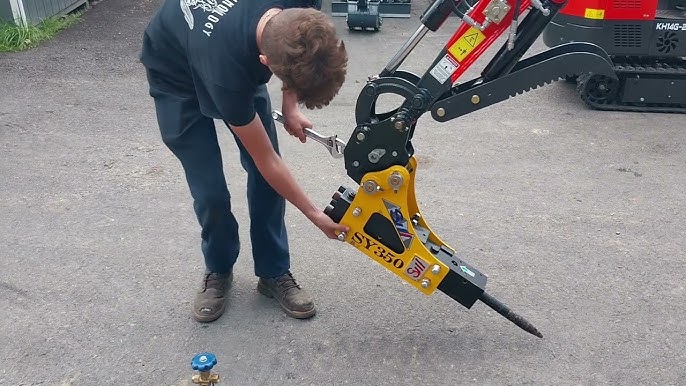Understanding Hydraulic Breakers for Excavators: A Comprehensive Guide
Hydraulic breakers, commonly referred to as breaker excavators or hammer attachments, are essential tools in modern construction and demolition projects. These powerful attachments are designed to utilize hydraulic power to break and demolish hard materials such as concrete, asphalt, and rock. In this article, we will explore various aspects of hydraulic breakers, including their specifications, types, and applications.
What is a Hydraulic Breaker?
A hydraulic breaker is an attachment that can be mounted on excavators to enhance their functionality. By converting hydraulic energy into mechanical energy, these breakers generate high-impact force to break through tough surfaces. They are vital in projects that involve heavy construction, road maintenance, and mining applications.
Key Specifications of Hydraulic Breakers
The specifications of hydraulic breakers can vary significantly based on the model and manufacturer. Here are some of the key specifications to consider:
- Excavator Weight Class: Hydraulic breakers are designed to work with excavators of various tonnage. Common classes include:
- 10 Ton: Furukawa F9
- 20 Ton: Furukawa HB20G Plus
- 30 Ton: Furukawa FXJ 375
-
40 Ton: Various models available
-
Chisel Diameter: The diameter of the chisel typically ranges around 155 mm, which is suitable for breaking through most construction materials efficiently.
-
Operational Oil Pressure: Hydraulic breakers usually operate at an oil pressure of 16 to 18 MPa, ensuring optimal performance.
-
Oil Flow Rate: The oil flow required for operation can range from 5 to 200 liters per minute, depending on the specific model of the breaker.
-
Impact Rate: Most hydraulic breakers produce an average impact rate of 300 to 400 bpm (beats per minute), which is crucial for effective material breakdown.
Types of Hydraulic Breakers
There are primarily two types of hydraulic breakers:
-
Handheld Breakers: These are smaller, portable units operated directly by the user. They are ideal for smaller jobs or confined spaces.
-
Excavator-Mounted Breakers: These are larger units attached to excavators, designed for heavy-duty applications in construction and demolition projects.
Benefits of Using Hydraulic Breakers
- Increased Efficiency: Hydraulic breakers significantly reduce the time required for breaking hard materials, enhancing overall project productivity.
- Versatility: They can be used in various applications, including demolition, construction, and roadwork.
- Powerful Impact: The hydraulic system allows for a consistent and powerful impact, making it easier to break even the toughest materials.
Choosing the Right Hydraulic Breaker
When selecting a hydraulic breaker, consider the following factors:
- Compatibility: Ensure that the breaker is compatible with the excavator model you are using.
- Weight Class: Choose a breaker that matches the weight class of your excavator for optimal performance.
- Application Needs: Assess the nature of the materials you will be working with to select an appropriate breaker model.
Conclusion
Hydraulic breakers play a crucial role in enhancing the capabilities of excavators, making them indispensable in the construction and demolition industry. With various models available, including those from trusted manufacturers like Furukawa, it is essential to understand the specifications and benefits of these attachments to maximize productivity on your projects. Whether you are working on a small renovation or a large-scale construction site, a hydraulic breaker can significantly improve the efficiency and effectiveness of your work.




































